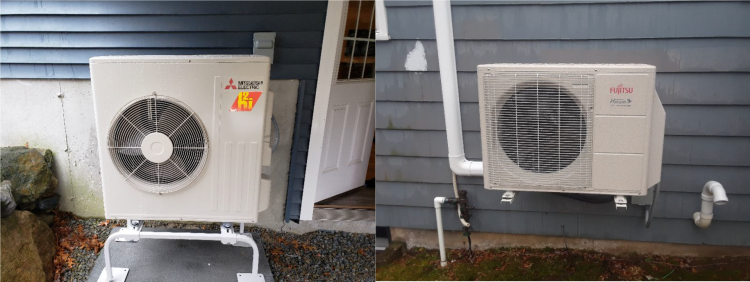
MassCEC’s whole-home air-source heat pump pilot program has been running for about two months now. This blog is part of our commitment to provide monthly updates on the pilot (see our launch posting and our one month update for more information). The goal of these updates is to share results along the way and get input as we go.
In the past month, we’ve had four new applications, bringing our total number of applications up to eight. Three of the new applications were retrofits, and one was our first new construction project. The new construction project will be a Vermod zero-energy modular home, designed to be heated with a single-head air-source heat pump plus a ducted energy recovery ventilation (ERV) system that continuously supplies every room in the house so the temperatures should be relatively consistent throughout the house, even with only one indoor head. This project shows that it can be easier (and cheaper) to heat a new, well-insulated home with heat pumps than to retrofit existing homes with heat pump, which makes me appreciate all the learnings that we’re getting from the retrofit projects even more.
This month we also had an application using Carrier equipment and one using Fujitsu equipment, creating some variety in manufacturer selection. Our geographic reach increased with two applications in Northampton (maybe a spillover effect from their HeatSmart campaign?). We now have installers from eighteen companies who have submitted the paperwork required to be listed as participating installers for this pilot program.
These are all exciting developments, but like an anxious new parent, I’m wondering why more projects haven’t applied to the pilot. In 2018, our previous rebate program had 82 applicants that switched from natural gas to whole-home air-source heat pumps and another 48 new construction homes that installed heat pumps with either no backup or only electric resistance or a wood stove as backup. So based on our data from last year, I would have expected about eleven projects per month instead of about four projects per month. If you’re an installer or builder or homeowner who isn’t submitting projects to this pilot please tell me why!
In other news from the pilot, this month we worked with our inspectors, CMC Energy Services, to refine our inspection criteria for whole-home projects and publicly post our inspection rubric, so that participating installers can know ahead of time what they’re going to be evaluated on. Our inspection rubric was largely drawn from the Northeast Energy Efficiency Partnership’s Guide to Installing Air-Source Heat Pumps in Cold Climates, in an effort to build on the work that they’ve done and promote regional consistency. One example of an inspection criteria that we tweaked for this pilot program is the clearance above the snowline. In the past, we’ve suggested mounting the outdoor units above the snowline as a best practice, but it wasn’t something we enforced as a requirement. For the whole-home projects, knowing that the heat pumps will need to provide heat throughout the winter, even during a snowstorm, we’re requiring that the outdoor units are mounted at least a foot off the ground and suggesting a foot and a half as best practice.
Thanks for following along as we go through this pilot program, and please reach out to me if you have any questions, comments, or ideas.